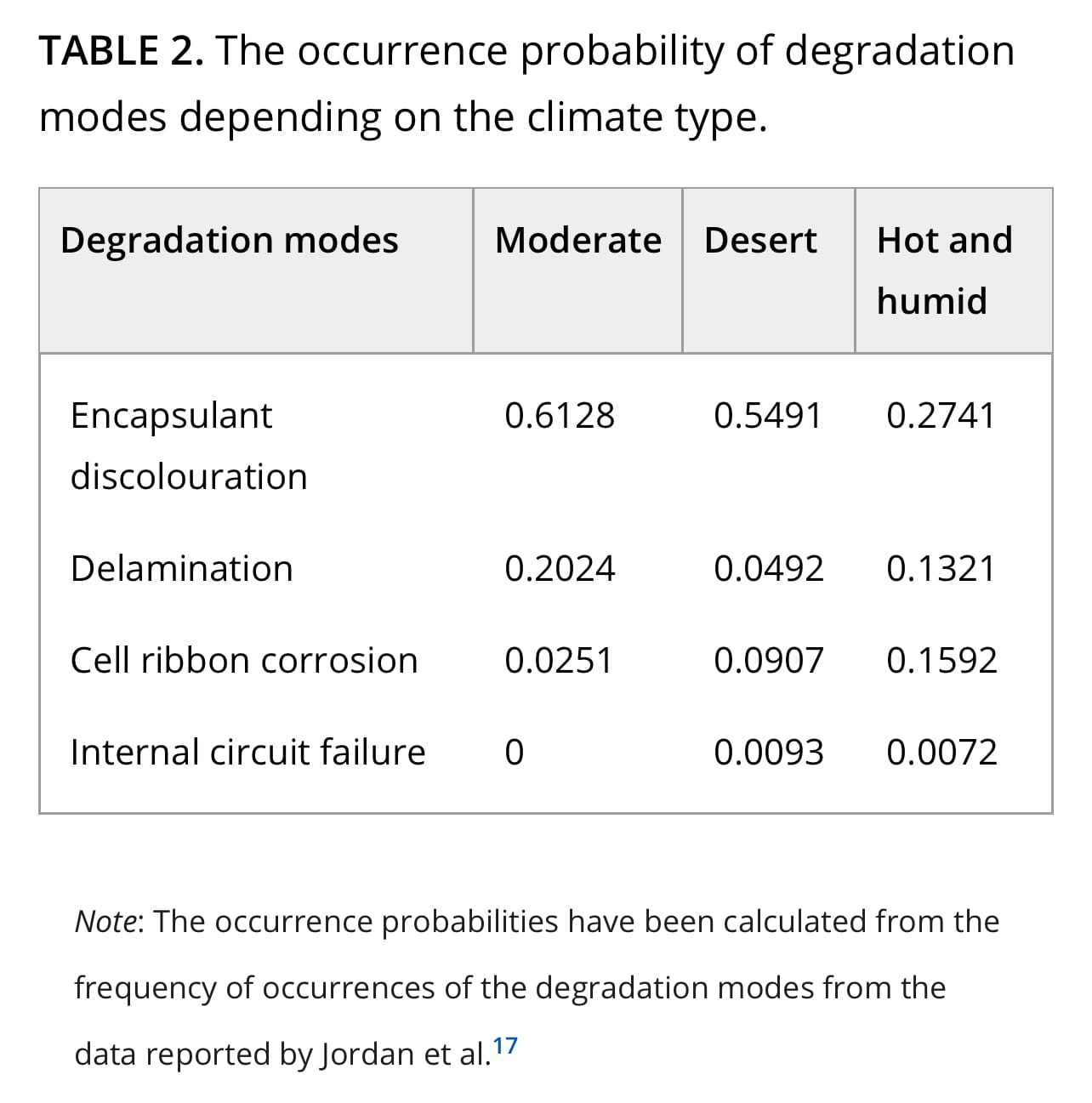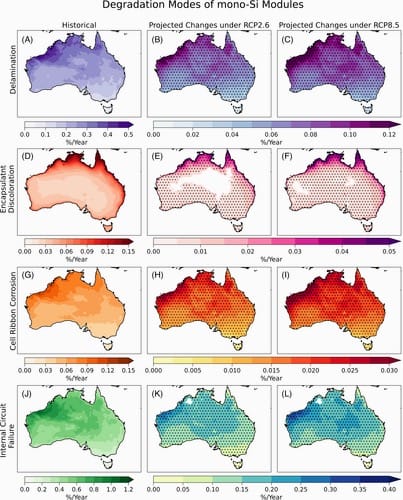Higher heat means more solar panel degradation. Australian researchers project solar panel breakdown rates by component due to increased temperatures.
We estimate that the weighted average degradation rate will increase up to 0.1%/year by 2059. On assessing the impacts of module degradation on future PV power generation and levelized cost of energy, we project up to 8.5% increase in power loss that leads to ~10% rise in future energy price…standard degradation rates vary from 0.26%/year to 2.3%/year depending on the dominant degradation mechanism and module type…ultraviolet (UV) radiation, temperature and humidity as the main climate stresses that lead to different degradation mechanisms by themselves or in synergy…Hot spots (33%) are the most common mode of degradation in monocrystalline-silicon (mono-Si) modules. The other common modes of degradation in mono-Si modules are ribbon discoloration (20%), glass breakage (12%), encapsulant discoloration (10%), cell breakage (9%) and PID (8%).

Results:
Our results show an increase in LCOE throughout the country under both future scenarios. We observe maximum changes in LCOE in the north-western part of the country up to 6.5% under RCP2.6 (Figure 3c) and up to 10% under RCP8.5 (Figure 3d). This means that energy will cost an additional 8 cents/kWh in those regions. The cost of energy in Eastern Australia is projected to increase up to 3 cents/kWh (up to 5%) in the future from the present rate (~70 cents/kWh). As expected, Central Australia is projected to undergo the least changes in future LCOE (up to 2%). We project that by the end of the century, the energy cost shall increase up to 8% under the RCP2.6 scenario (Figure S3). Under RCP8.5, we predict a 2% increase in LCOE near the central regions of Australia, up to 8% in the east and south and up to 15% in the north due to an increase in future power loss (Figure S3).
